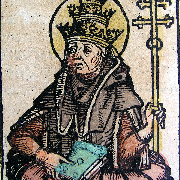|
Sioux posted:Didn't Turkic people come from the steppes of central asia as well? Sort of the same area as where the Huns came from? The original Turkic homeland seems to have been in present-day Mongolia, in and around the Orkhon Valley, beginning roughly in the 6th and 7th centuries they began migrating westwards into the Central and Western steppe zones, supplanting, dispersing and assimilating the Iranian speaking peoples who had previously dominated the area. This having happened relatively late and rapidly, the Turkic languages also diverged very recently in history and the mutual intelligibility between them is much more proncounced than what you see in many other language families. We don't know where the Huns came from except it was certainly from the East, not from Central Asia, but beyond, in the Eastern Steppe zone that is. While the equation of the Huns to the Xiongnu is very theoretical and almost certainly can't ever be proven, though there is some evidence from their conduct and such that they were familiar with the way nomadic confederations such as the Xiongnu had interacted with the Chinese Empire. As to whether the Huns were Turkic? We don't really know, if they were they were an early isntance of Turkic migrations and not really affiliated with the larger waves that came later and transformed the Steppes. There is some evidence in what we know of some of their names, though it should also be noted that some of the Huns, like Attila himself, had Germanic names for instance and we know they weren't Germanic-speakers. IIRC there is some evidence that the Hepthalites/White Huns were a largely Iranian confederation, but that should not really be applied to say anything meaningful about the 'actual' Huns as I believe we're pretty sure that they were separate peoples/trial confderations* *important to note that steppe tribal confderations, while they typically had one or a small number of 'noble' or 'royal' tribes at their center who were pure nomads, often were highly multi-ethnic and multi-lingual entities consisting of a number of different tribes and peoples, not all of whom were pure nomads (in fact, agricultural or forest-dwelling peoples, often tributary subjects, were very important in securing access to goods for manufacture and trade), that was most often only the royal elite.
|
|
|
|

|
| # ? Jun 8, 2024 12:59 |
|
Look at how wrong you all are! Every turkish boy and girl knows that all who lived in yurts from the Baltic to the Pacific were Turks!  quote:I lived in the 7th century BC. The people of my country stretched from eastern Europe to China. Our people were called "Scythians". We were one of the ancient societies speaking the Turkish language.  quote:The Turks knew very well how to shoot arrows, use swords and ride horses. Since we are a community of Turkish origin, we were masters in these matters. Together with my friends, we used to play hunting on the banks of the Danube and Volga rivers, emulating our elders.
|
|
|
|
Zedhe Khoja posted:Every turkish boy and girl knows that all who lived in yurts from the Baltic to the Pacific were Turks! Are the same that built Turks up Uh Kırım Türkiye'dir
|
|
|
|
For map content check out that anemic Achaemenid empire they're showing (book is about Tomyris).
|
|
|
|
Didn't the Scythians speak an Indo-European language related to Iranian?
|
|
|
|
Yeah all the scythian languages were Iranian. Its pretty much the only thing we know about it because all of their neighbors explicitly said it was similar to and mutually intelligible with other Iranian languages. At the park near me they have a little area for busts of famous turkish figures and it has Attilla the Hun (although a turkic connection there is actually a viable theory)
|
|
|
|
Chikimiki posted:Didn't the Scythians speak an Indo-European language related to Iranian? The Scythians weren't really one singular people, but as far as we know they all spoke Eastern Iranian* languages, as opposed to say Persian and Kurdish which are Western Iranian languages. East/West is a bit of a weird distinction here, since many of the Eastern Iranian languages would have been located further west than the Western ones, North/South is more apt in ancient times if the distinction had been made then, I believe the reason it's divided like that is because the most notable extant Esatern Iranian language is Pashto. *I believe, at least when dealing with history, "Scythian" and "Eastern Iranian" can generally be taken to be mean much the same thing, though there were many prominent Eastern Iranian languages in Central Asia spoken by people who were not pastoral nomads, like Bactrian and Sogdian (the latter of which was a long-lasting and important trade language along the Silk Road). The Parthians who ruled post-Seleucid Iran and Central Asia were also a Scythian people by the way and always remained quite distinct from the Medes and Persians and other peoples from Iran proper. Also a thing to note is that while pre-Turkic migrations, Central Asia was largely Iranian (like the Western and Central Steppes), the Persian language seems to have had relatively little penetration in Eastern Iran, Afghanistan and Central Asia until roughly the Medieval Era, where, somewhat ironically perhaps, Turkic dynasties were largely responsible for promoting the Persian language in administration and literature. Randarkman fucked around with this message at 13:33 on Aug 10, 2021 |
|
|
|
Randarkman posted:*I believe, at least when dealing with history, "Scythian" and "Eastern Iranian" can generally be taken to be mean much the same thing, though there were many prominent Eastern Iranian languages in Central Asia spoken by people who were not pastoral nomads, like Bactrian and Sogdian (the latter of which was a long-lasting and important trade language along the Silk Road). Great, now I'm imagining Sogdians as pre-Modern versions of Borat somehow e: "This silk very nice, good for wiping of rear end!" e²: sorry
|
|
|
|
Sogdians practiced skull elongation. As did the Huns. Possibly that could mean the two are at least somewhat related or possibly that could mean that skull binding was just hip and cool in that general region.
|
|
|
|
FreudianSlippers posted:Sogdians practiced skull elongation. As did the Huns. If you noticed that your neighbour's kid had a cool long skull, wouldn't you try to figure out how to do the same?
|
|
|
|
Negostrike posted:Ah I see it's time to post this pre-Indo-European-loaded map Wasn't Iceland uninhabited before the Vikings showed up? It didn't have an indigenous population
|
|
|
|
Vasukhani posted:Wasn't Iceland uninhabited before the Vikings showed up? It didn't have an indigenous population Missed opportunity for a giant auk civilization
|
|
|
|
Vasukhani posted:Wasn't Iceland uninhabited before the Vikings showed up? It didn't have an indigenous population I think there was some previous settlement from the British Isles, but like a hundred years or so before. Also definitely Indo-European. The idea that Iceland was settled from the west is ridiculous on account of the lack of wood to build ocean going ships out of in Greenland. Also, even their big whaling boats were invented around the time they were being colonized by us Danes.
|
|
|
|
I like the inclusion of the Magyars, famously the indigenous inhabitants of Pannonia who were there way before the Indo-European usurpers.
|
|
|
|
BonHair posted:I think there was some previous settlement from the British Isles, but like a hundred years or so before. Also definitely Indo-European. Yeah, some Irish monks or something right? Though thanks to slavery, Irish people continued to be a substantial portion of the population (and contributing to the genetic makeup of Icelanders) during the Scandinavian settlement as well, which seems to have been almost exclusively male.
|
|
|
|
Remove the proto-indo-europeans and I say it's most likely to end up settled by polynesians
|
|
|
|
Vasukhani posted:Wasn't Iceland uninhabited before the Vikings showed up? It didn't have an indigenous population According to the oldest written records the only inhabitants before the late 9th century arrival of the Norse were Irish hermit monks called The Papar which reportedly left because they didn't want to live near pagans. There are some Irish and English records that might refer to Iceland centuries before that. However recent archeological evidence suggests larger scale settlement up to 200 years before the suggested settlement date of 874(+-2 years) but whether that just means the written records are wrong or if there was some larger population of (probably Gaelic) people before Norse settlement isn't known. Also in southern Iceland there's a number (200+) of manmade caves which are very similar to manmade caves in Ireland but no such caves exist in Norway from whence most of Iceland's settlers came. How old these caves are and how long they've been in use is basically impossible to tell and a bunch of them have been in continuous use for hundreds of years as pantries, storehouses, and barns which means what came before is constantly being trampled and altered. One is used as a church and features a number of possibly ancient cross carvings which might indicate Christian settlement from long before Iceland converted in 1000. They might be the hidden relics of a ancient Gaelic settlement of Iceland or they might be more recent. Tldr: Iceland probably had no native population before the arrival of the Norse circa 870 but the Irish might've beat them to it by a few centuries and either been enslaved/assimilated into the new settlers or simply been driven out. Or maybe the Norse just arrived a lot earlier than the medieval written record (probably sponsored by land owners to solidify their land claims) claims. All of this is very much not quite well researched yet. Sidenote: The only indigenous mammal in Iceland is the arctic fox. What little other wildlife there is (reindeer, minks, mice) is all imported. FreudianSlippers fucked around with this message at 21:41 on Aug 10, 2021 |
|
|
|
Those Irish monks were loving hardcore
|
|
|
|
FreudianSlippers posted:Sidenote: Wait what did the foxes eat before the other mammals showed up
|
|
|
|
Armacham posted:Wait what did the foxes eat before the other mammals showed up Birds, fish, marine invertebrates, seal pups Seals are mammals, but they are not land mammals, which is the arctic fox’s claim to fame.
|
|
|
|
Armacham posted:Wait what did the foxes eat before the other mammals showed up Irish monks, weren't you listening?
|
|
|
|
Monkfish, presumably
|
|
|
|
When can we start calling them the Aryans again this Proto-Indo-European is hard to say.
|
|
|
|
Just came across this which might be interesting for y'all Indo-European buffs https://www.youtube.com/watch?v=96V2h21CGEk "Indo-Uralic"?! 
|
|
|
|
I've heard the Etruscan<>Basque thing too, though I can't remember where I heard it. But I do recall that the argument is something like this: Sardinian (so the argument goes) has a set of distinctive idiosyncracies compared to other Romance and Indo-European languages, and that it's possible to map those idiosyncracies onto what we know of Etruscan, which follows a theory that the Etruscan language (supposedly) survived longer in Sardinia than elsewhere. So these idiosyncracies also seem to be loosely cognate to Basque, too. Or something. It's a neat theory but I suspect that it's not widely accepted in whole or in part.
|
|
|
|
steinrokkan posted:I like the inclusion of the Magyars, famously the indigenous inhabitants of Pannonia who were there way before the Indo-European usurpers. The map doesn't say "europe if nobody ever showed up starting from a year before when the indo-europeans showed up," it just says no indo-europeans. Later conquests by non-indo-europeans are fair game.
|
|
|
|
CommonShore posted:I've heard the Etruscan<>Basque thing too, though I can't remember where I heard it. There probably wasn't just the one language family in Europe before the Indo-European langauges came to the scene. On a global basis isolate languages like Basque is are fairly common and nearly always seem to indicate the last remnants of a language family that used to cover a much greater area before another language family came to dominate, if you look at Africa (where previously alot of languages that are now consdiered to be isolates were grouped together, just because) and India you can find many examples of this. The only thing that's sort of unique about Europe is that there's only Basque.
|
|
|
|
Vasukhani posted:Wasn't Iceland uninhabited before the Vikings showed up? It didn't have an indigenous population Yeah but that's how every territory works, it's not like aborigines showed up out of the ether in Australia, they had to cross from PNG and southeast Asia or whatever. By now those Icelanders and their direct descendants have been in Iceland longer than Maori have been in New Zealand. If you want to get really picky about "only the direct descendants of the first people to ever show up here are indigenous" then I don't think anything counts except like New Zealand, maybe Madagascar, and some other scattered smaller islands. I mean like berbers are considered indigenous to North Africa, but I'm sure they invaded and kicked someone else out sometime before the Romans showed up and started documenting things in writing.
|
|
|
|
Yeah I sometimes think about my ancestors the Caninefates and the Batavians as "indigenous" to my country, but it's pretty evident that Proto-Germanic people came from Scandinavia/Baltic areas and kicked some others out, too. Probably Celts... Maybe pre-Indo Europeans? The interesting thing to me is how the Germanic peoples, coming from a relatively small area, could grow so hard, diverge into many different tribes and confederacies and replace the already settled and also numerous Celts.
|
|
|
|

|
|
|
|
Sioux posted:The interesting thing to me is how the Germanic peoples, coming from a relatively small area, could grow so hard, diverge into many different tribes and confederacies and replace the already settled and also numerous Celts. I don't know anything about the Celtic-Germanic shift in particular, but if it's like other big linguistic replacements, the short answer is that the Germanic speakers didn't replace the Celtic speakers. Instead the people who were already living there adopted new a language (likely with some blending along the way).
|
|
|
|
|
|
|
|
Turkey with Peloponnesian characteristics.
|
|
|
|
PittTheElder posted:I don't know anything about the Celtic-Germanic shift in particular, but if it's like other big linguistic replacements, the short answer is that the Germanic speakers didn't replace the Celtic speakers. Instead the people who were already living there adopted new a language (likely with some blending along the way). It's not out of the realm of possibility that it involved displacement.
|
|
|
|
Yeah my writing turned out more definitive than intended, I meant to say that's probably what happened. It's certainly possible that displacement occured, but it seems to be a much rarer scenario, at least when dealing with settled peoples.
|
|
|
|
The whole trying to understand the ethno-linguistic origins of steppe nomads is very interesting. I was reading recently about the Avars who occupied the Pannonian basin for hundreds of years but we basically know nothing about them. The nothing we know is: 1. The Avars were probably not Avars but just called themselves Avars so people would think they were related to some other people who were Avars. 2. No one knows if they were Iranians, Turks, or possibly even Slavs who started acting like Turks and/or Iranians. 3. Or the Avars might have actually been the Finno-Ugric Magyars pretending to be Avars and what we call the Magyars were actually an unrelated Turkic group who started acting like the Avars after they conquered them. So who were the Avars? We just don't know. That also led me into the baffling Croatian nationalist theory that they aren't actually Slavs but are actually the White Huns who just migrated to the Carpathian mountains and started pretending to be Slavs so they could trick the Serbs into helping them conquer the Balkans.
|
|
|
|
PittTheElder posted:Yeah my writing turned out more definitive than intended, I meant to say that's probably what happened. It's certainly possible that displacement occured, but it seems to be a much rarer scenario, at least when dealing with settled peoples. Yeah I agree that it probably happened that way most often. We do have evidence of prehistoric genocides, so I think we shouldn't totally dismiss grim scenarios. The beginning of the Bronze Age in Britain is one case that's apropos the map. It seems that it came with people migrating from the mainland, and they mixed very little with the previous inhabitants, who mostly did not leave descendents. It could be because of disease or something like that, but it could also be because they were killed or enslaved.
|
|
|
|
a pipe smoking dog posted:The whole trying to understand the ethno-linguistic origins of steppe nomads is very interesting. I find it really interesting we know so little about the Avars, who were one of the biggest kingdoms in Europe and battled against the Franks more often than not. Even more mind-blowing are the very plausible theories that they were related to the Mongols or even Tungusic peoples, which means the first Avars in Europe probably looked very East Asian (and it looks like genetic studies on them indicates just that). Barely a loving clue about what language they spoke though. Kinda like the Huns.
|
|
|
|
Bigger question: what is it about the Pannonia basin that attracts nomads wishing to be non-nomadic settlers?
|
|
|
|

|
| # ? Jun 8, 2024 12:59 |
|
It is a bit like a giant funnel ringed with mountains, maybe it's that?
|
|
|

































 Yes, it's like a lava lamp.
Yes, it's like a lava lamp.






